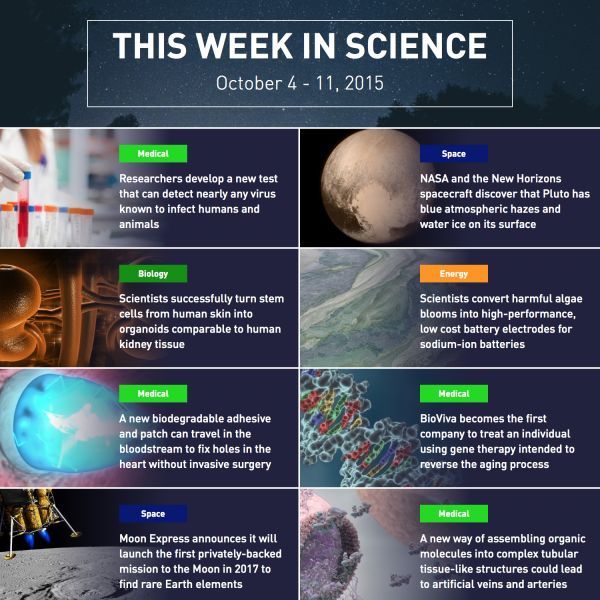Category: space – Page 1,098
Positron Dynamics plans to fly an antimatter powered cubsat
In 2013, Positron Dynamics had seed funding from Paypal billionaire Peter Thiel’s Breakout Labs. Initial simulations show that as much as 10 micrograms of positrons could be produced each week with a linear accelerator,” says co-founder Ryan Weed, PhD, a physicist and former cryogenic engineer for Jeff Bezos’s space flight company Blue Origin.
Now they have stated in a new presentation that they will have an antimatter powered cubesat vehicles in 2016–2019. They will be able to keep a cubesat in low earth orbit for seven years instead of few days. Then they will enable high speed spacecraft to go the outer solar system and then to the stars at a significant fraction of the speed of light.

Giant ‘Hole’ in Sun Is 50 Earths Wide
I know that solar flares and CME’s aren’t an existential threat to humanity (as long as we’ve got our geomagnetic shield in place, of course), but having seen the movie Knowing I can’t help but feel at least a small and totally irrational bit terrified. And not by Nicolas Cage’s hair, either! (although it does come in a close second wink )
The sun has sprung a leak: A hole in the topmost layer of the sun and its magnetic field, the size of 50 Earths, is letting loose an ultrafast solar wind that has kicked off several nights of auroras down on Earth.
A new image, from NASA’s orbiting Solar Dynamics Observatory, reveals the enormous hole as it was Oct. 10, taken at an ultraviolet wavelength unseen by the human eye. To an ordinary observer, the gaping hole would be invisible, though you should NEVER stare at the sun because serious eye damage can result.
The gap in the sun’s magnetic field lets out a stream of particles traveling at up to 500 miles (800 kilometers) per second, kindling a days-long geomagnetic storm upon hitting Earth. [Biggest Solar Storms of 2015 in Photos].
Asteroid Mining: The $100 Trillion Industry
The Biggest Opportunity of our Lifetime: Asteroid Mining could be a $100 Trillion Industry.
For more videos go to: http://futurism.com/watchmore
Weapons of Mass Extinction
Today on Far Future Horizons we present another exciting episode of the acclaimed documentary series How the Universe Works ~ Weapons of Mass Extinction.
The Universe is a very dangerous place to live. Death and destruction lie all around us. The Cosmic Grim Reaper lies in wait; scythe in hand, in some dark corner of the universe ever ready to bestow some dark faith upon us.

The Biggest Opportunity of our Generation: Asteroid Mining could be a $100 Trillion Industry
To give you a taste, an asteroid containing $5 trillion worth of platinum zoomed past Earth just a few months ago.
Embry-Riddle and Honeybee Robotics Receive $750,000 Research Award from NASA to Develop Asteroid Mining Robots
NASA has announced the continuation of a two-phase $750,000 research award to Embry-Riddle Aeronautical University and project partner Honeybee Robotics to develop a small integrated autonomous robotic spacecraft system to support the exploration and mining of asteroids and other planetary bodies and moons.
Dr. Hever Moncayo and Dr. Richard Prazenica, both Assistant Professors of Aerospace Engineering in the College of Engineering are leading the effort at the Daytona Beach Campus. Also collaborating on this project is Dr. Sergey Drakunov, Professor of Engineering Physics in the Physical Sciences Department and Associate Dean of the College of Arts and Sciences. Dr. Kris Zacny is the team lead for Honeybee Robotics.
The Embry-Riddle team includes Aerospace Engineering master’s degree students Diego Garcia, Chirag Jain, Andres Chavez, Wai Leuk Law, Aerospace Engineering Ph.D. student Andres Perez and Engineering Physics Ph.D. student Samuel Kitchen-McKinley. The researchers are focusing on an innovative concept based on autonomous small free-flyer prospector spacecraft that can leave from, return and recharge from a mothership on the planet’s or asteroid’s surface.

Space-inspired objects — By Helen Chislett | Financial Times
“When the Rosetta spacecraft deployed the Philae lander to land on a comet last November, the world held its breath. … Little surprise too that space is back on the design agenda as a primary source of inspiration. Visiting Design Miami/Basel in June, it was obvious that the “Philae effect” was having an impact much closer to home.”

This Week in Science: October 4th — 11th, 2015
This Week in Science: The First Privately Backed Moon Mission, Using Gene Therapy to Reverse Aging, Artificial Veins and Arteries, and More.
Go here for a clickable image: http://futurism.com/images/this-week-in-science-october-4th-11th-2015/?src=home
Sources
Detecting All Viruses:http://futurism.com/5srzA
Water on Pluto: http://futurism.com/aO2av
Kidney Tissue from Stem Cells: http://futurism.com/DLDON
Converting Algae Blooms into Electrodes: http://futurism.com/w9ez
Fixing Holes in Heart: http://futurism.com/a13Jd
Reversing Aging: http://futurism.com/TjaTL
Private Moon Mission: http://futurism.com/9V626
Artificial Veins: http://futurism.com/rKNzH

Close cousins? Comparison between Earth and Kepler-452b and their host stars
Scientists using data from NASA’s Kepler mission have confirmed the first near-Earth-size planet orbiting in the habitable zone of a sun-like star. The habitable zone is the region around a star where temperatures are just right for water to exist in its liquid form.
The artistic concept compares Earth (left) to the new planet, called Kepler-452b, which is about 60 percent larger. The illustration represents one possible appearance for Kepler-452b — scientists do not know whether the planet has oceans and continents like Earth.
Both planets orbit a G2-type star of about the same temperature; however, the star hosting Kepler-452b is 6 billion years old, 1.5 billion years older than our sun. As stars age, they become larger, hotter and brighter, as represented in the illustration. Kepler-452b’s star appears a bit larger and brighter.
Image credit: NASA Ames/JPL-Caltech/T. Pyle & W. Stenzel.